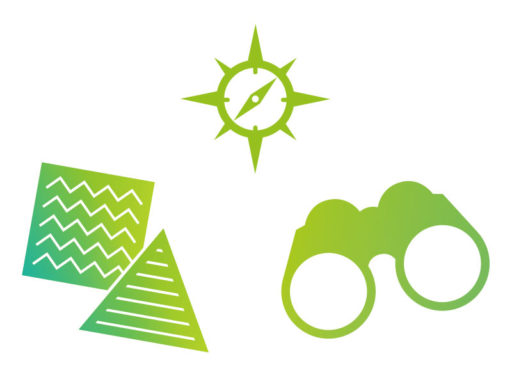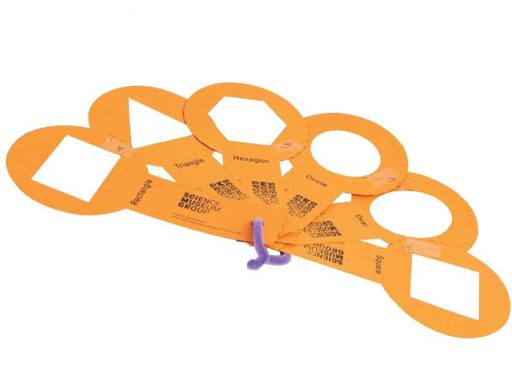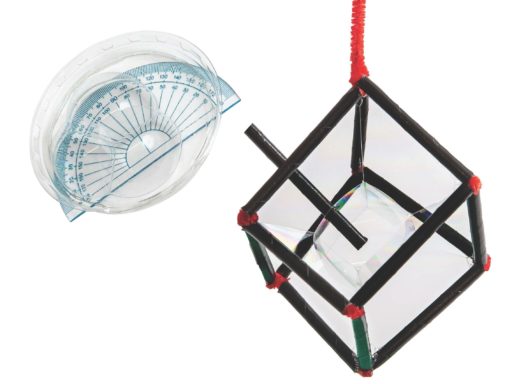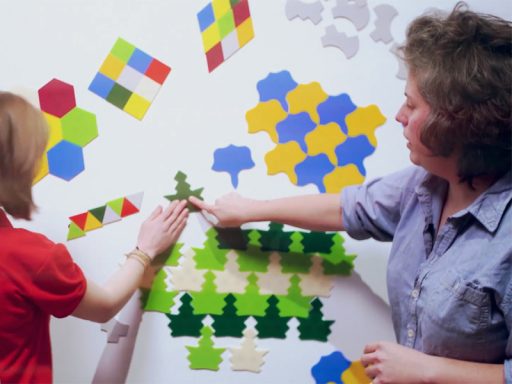Shapes and patterns can be found all around us – from flowers to footballs and seashells to staircases. In this activity, simple lines drawn on bottle tops or jam jar lids provide a fun way into the wonderful world of geometry.
Printable downloads
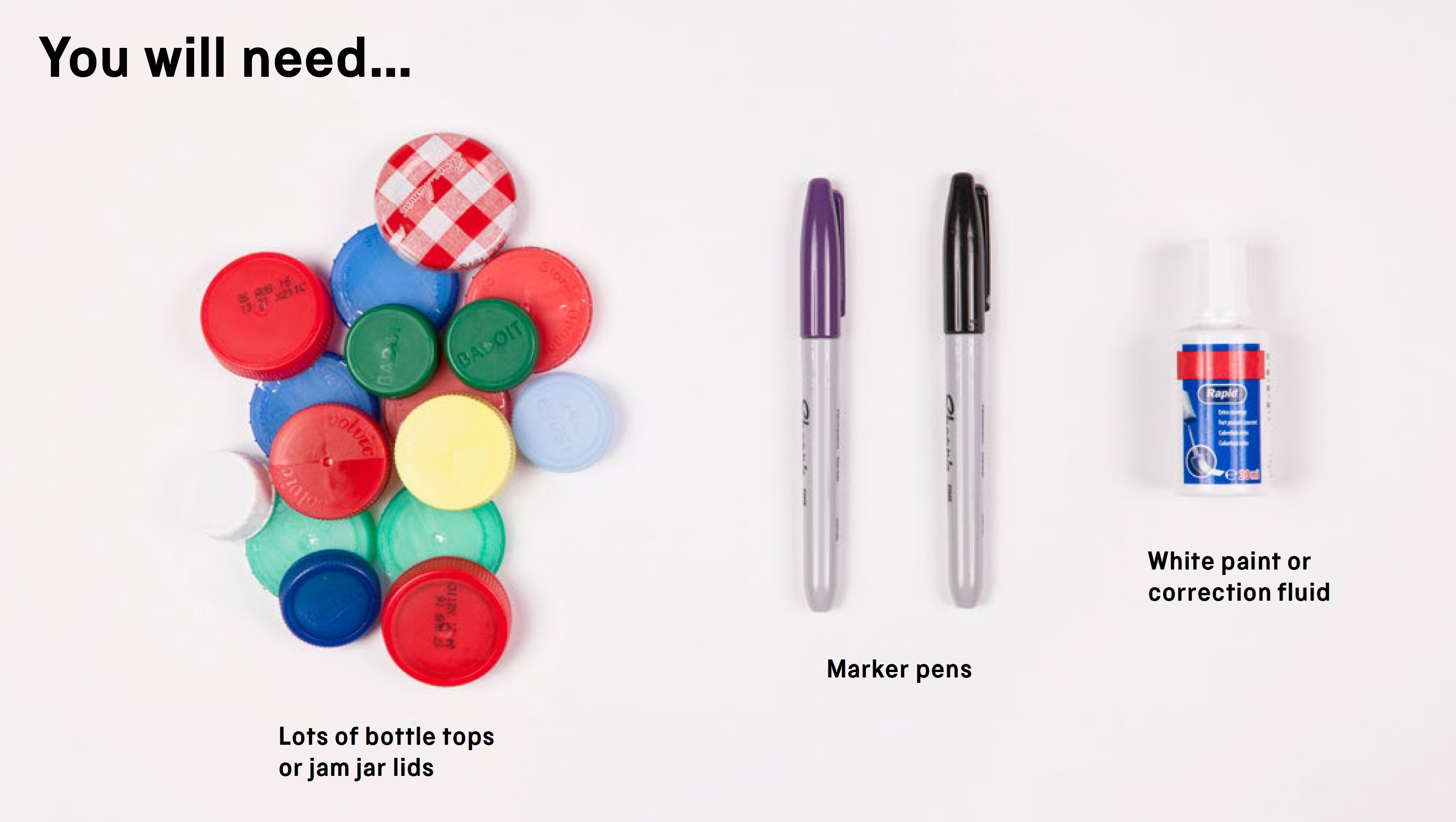
-
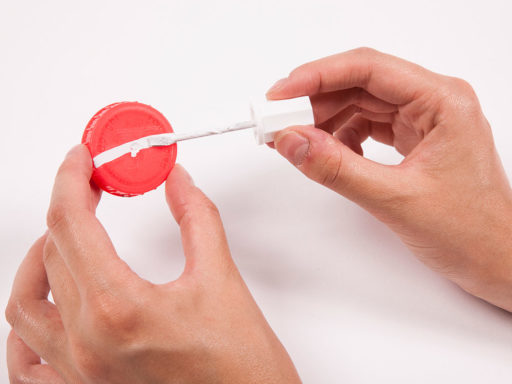 With your paint or marker pen draw some straight lines, right angles or curves onto the bottle tops.
With your paint or marker pen draw some straight lines, right angles or curves onto the bottle tops. -
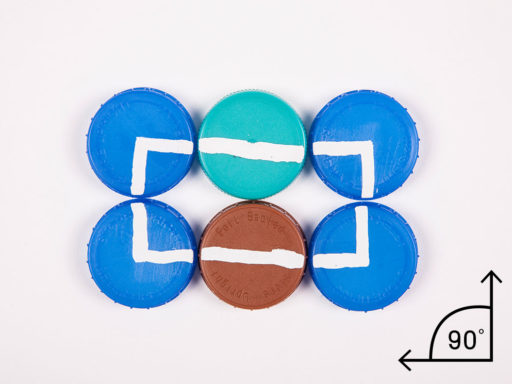 Connect the different lines you’ve drawn to make shapes. Try making a rectangle.
Connect the different lines you’ve drawn to make shapes. Try making a rectangle. -
 What other shapes can you make?
What other shapes can you make? -
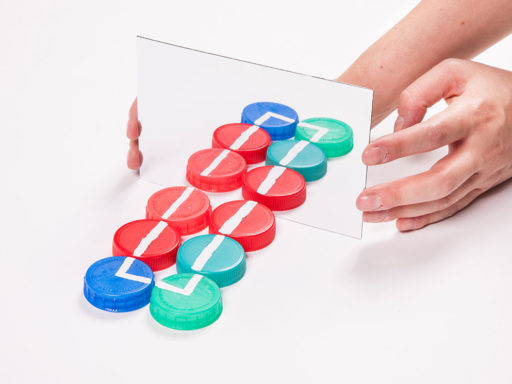 Experiment with other shapes. Try using a mirror to investigate lines of symmetry.
Experiment with other shapes. Try using a mirror to investigate lines of symmetry. -
 Be creative – draw different lines on the bottle tops and see if you can link every bottle top together!
Be creative – draw different lines on the bottle tops and see if you can link every bottle top together!
Think and talk about…
- Can you find any of the shapes that you’ve made in the room you’re in?
- What are the similarities and differences between the shapes you made?
- Why do you think most doors and windows are normally rectangles?
Investigate…
- Try and make a shape with as many sides as possible. What’s the biggest number of sides you can go up to?
- How many different shapes using right angles can you make?
- Can you link all of your bottle tops together into one shape?
Did you know?
A 50-pence coin has seven sides of equal length – so it’s a regular heptagon.
What’s the science and maths?
Mathematicians define straight-sided two-dimensional shapes according to the number of sides they have, and also the angles at their corners, or ‘vertices’. The number of sides is always equal to the number of vertices – so a square or a rectangle has four of each, while a triangle has three of each. If all a shape’s angles are the same and all its sides are the same length, it is a ‘regular’ shape.
All two-dimensional shapes with straight sides are called polygons; circles and ellipses (ovals) have curved sides, and are not polygons.
Science and maths in your world
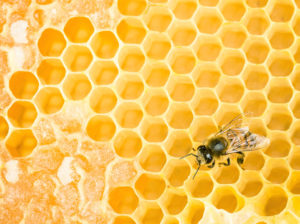 You’ll find squares, rectangles, hexagons, triangles and circles everywhere in your everyday life – in buildings, cars, furniture and even in nature. Triangles are particularly useful in structures such as towers and bridges because they are very strong.
You’ll find squares, rectangles, hexagons, triangles and circles everywhere in your everyday life – in buildings, cars, furniture and even in nature. Triangles are particularly useful in structures such as towers and bridges because they are very strong.
